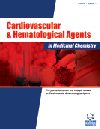
Full text loading...
We use cookies to track usage and preferences.I Understand
Type 2 diabetes has become a concern issue that affects the quality of life and can increase the risk of cardiac insufficiency elevating the threat to the life safety of patients. A recognized cause of cardiac insufficiency is diabetic cardiomyopathy, chronic hyperglycemia, and myocardial lipotoxicity which can reduce the myocardial contractile performance, and enhance the cardiomyocyte hypertrophy and interstitial fibrosis. The cause of diabetic cardiomyopathy is multi-factorial which includes oxidative stress, insulin resistance, inflammation, apoptosis, and autophagy. Recent clinical studies have suggested the dysbiosis of gut microbiota, secretion of metabolites, and their diffusion in to the host as to have direct detrimental effects on the cardiac contractility.
In the present paper, we have done in silico studies including molecular interaction of phytoconstituents of Tinospora cordifolia against reactive oxygen species producing proteins. Whereas, in vitro studies were conducted on H9C2 cardiac cells including cell morphological examination, level of reactive oxygen species, cell count-viability, apoptotic status, in the presence of high glucose, trimethylamine-n-oxide, and plant extracts which were determined through cell analyzer and microscopic assays.
The treatment of high glucose and trimethylamine-n-oxide was found to be increase the cardiac stress approximately two fold by attenuating hypertrophic conditions, oxidative stress, and apoptosis in rat cardiomyocytes, and Tinospora cordifolia was found to be a cardioprotective agent.
Conclusively, our study has reported that the Indian medicinal plant Tinospora cordifolia has the ability to treat diabetic cardiomyopathy. Our study can open up a new herbal therapeutic strategy against diabetic cardiomyopathy.

Article metrics loading...

Full text loading...
References


Data & Media loading...

